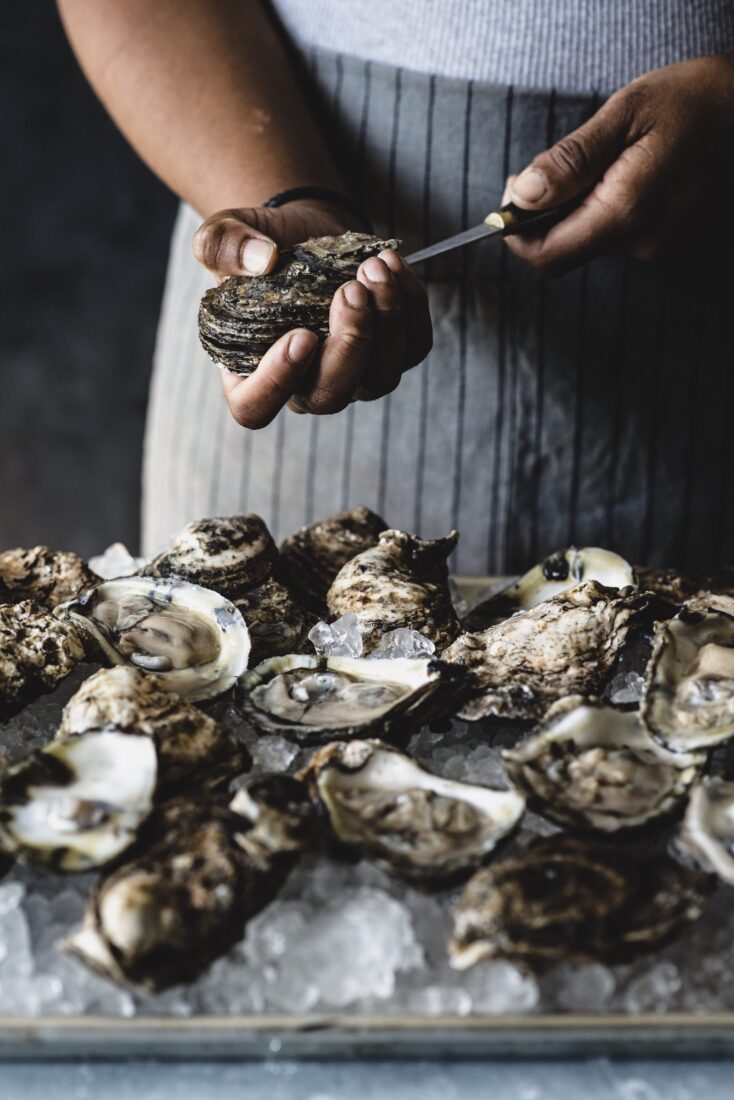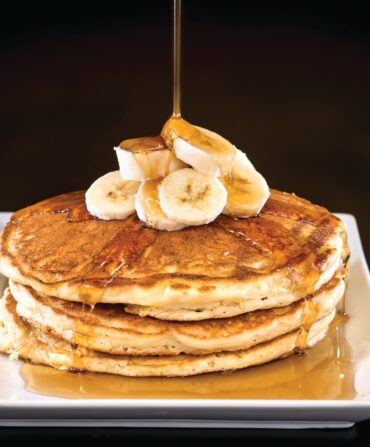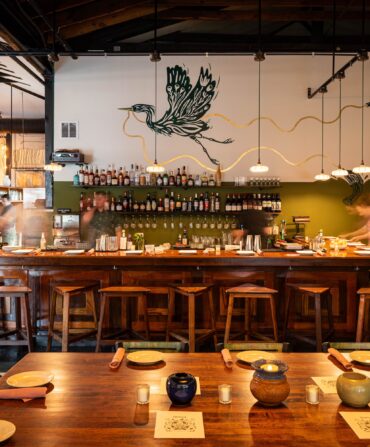You know that moment when a platter of freshly shucked oysters is placed before you and you pause, lemon in mid-squeeze, to ponder if this is the right time of year to consume them? Then you just say Oh, shuck it, and slurp one down. Truth is, people tend to have all sorts of questions about the South’s favorite bivalve, so we rounded up a couple of experts, namely an oyster farmer and an oyster-centric chef, to provide some answers on the half shell.

Question: Whether Southern oysters come from Chesapeake Bay, the Carolinas, or the Gulf of Mexico, they’re all one species, Crassotrea virginica. So why can they taste so different?
Jasmine Norton, chef, the Urban Oyster, Baltimore: It’s mostly due to the salinity level of the body of water they come from. Oysters from a bay or river where the water is less salty can be a bit sweeter, and oysters from farther into the ocean often have that brinier, oceanic quality.
Tom Bierce, owner, Charleston Oyster Farm, South Carolina: Salinity is definitely a big factor. We harvest both farmed and wild oysters here, and I also find that there’s a bit more minerality to wild oysters, because they live and feed in a different part of the water column than farmed oysters that are raised in floating cages in the top twelve inches of water.

Question: Which is better, a small oyster or a big oyster?
Norton: Both are good—it sometimes depends on how you use them. We serve both farmed and wild oysters at the Urban Oyster. We like wild oysters on the half shell because they tend to be a bit larger. They also make for better grilled oysters. The farm-raised oysters tend to be smaller, more the size for oyster cocktails.
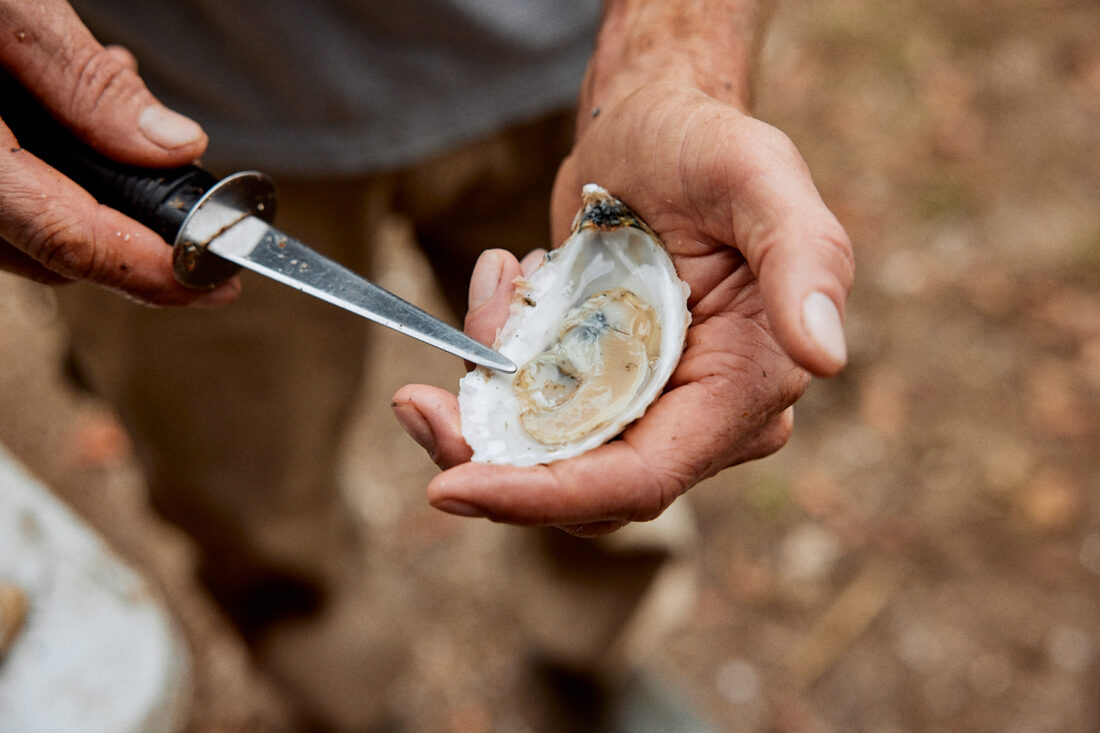
Question: Tradition holds that we should avoid oysters in months that don’t contain the letter “R,” meaning the warmer months of May through August. True or false?
Norton: False, science has debunked that. You can absolutely eat oysters year round. There used to be some validity to it, but with farm-raised oysters and the water testing that takes place now, oysters are fine to eat in months that don’t contain “R.”
Bierce: You certainly can eat farmed oysters year round. It’s not the water temperature that can be a concern in warmer months, it’s the air temperature, and wild oysters clustered on rocks might get exposed twice a day with the tides. But oyster farmers have the ability to keep farmed oysters submerged. Another important factor is that farmed oysters are infertile, so they don’t expend the energy of spawning in the warmer months that hurts the quality of the meat.
Question: How can I tell if an oyster is bad?
Bierce: Listen to it. Knock two oysters together, and they should sound solid, like rocks. If you get a hollow sound, one of them is bad.
Norton: A bad oyster has a pretty robust smell, even unshucked. Sometimes you don’t even have to put it up to your nose to notice that. For a shucked oyster that’s gone bad, sometimes the meat gets cloudy or has a little green tinge.
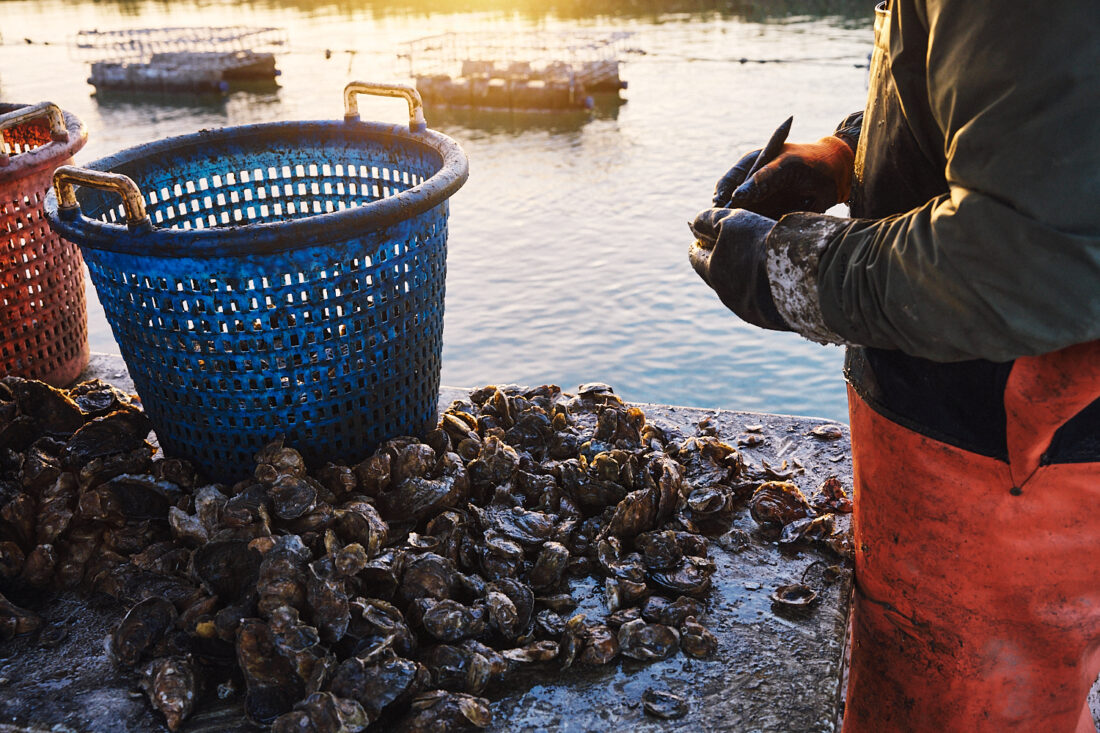
Question: What’s the secret to shucking an oyster without stabbing yourself?
Bierce: A pro tip is to use the oyster knife more as a lever. Instead of trying to jam the knife all the way in, think of the oyster as a lock and the knife as the key. It’s easier to turn the knife blade and pop the oyster open—and not open up your hand.
Norton: First and foremost, know if the oyster is wild or farmed. Wild oyster shells are thicker and stronger, so it’s much easier to open them from the hinge in the back. The shells of farmed oysters are thinner, so it’s easier to open them from the bill, and if you do try to pry the hinge, the shell can crumble.
Question: What’s the best way to eat an oyster on the half shell?
Norton: That’s definitely subjective. I know some purists who go for just squeezing on a little lemon. Personally I’m a sauce person. I like a potent cocktail sauce with a lot of horseradish. And since we’re in Baltimore, sometimes we put Old Bay on them too.
Bierce: I like them right on the farm, just because I can. People can experience that on our oyster farm tours, and eat them right out in the boat. I like to have the first one unadulterated, with nothing on it. Then you can go nuts. I do like them dressed with a mignonette.
Question: What are some fancier preparations?
Norton: At the Urban Oyster we’ve marinated oysters in Clamato, Red Stripe beer, and Caribbean spices, then put the meat back on half shells rimmed in chili lime. On the grilled side of things, our version of Oysters Rockefeller, which we call Southern Rock, uses a mousse of pureed collard greens and Parmesan instead of spinach, and cornbread croutons instead of breadcrumbs. I think of oysters like eggs—everybody has a preference on preparation.
Question: Is it acceptable to eat a raw oyster on top of a cracker?
Bierce: People have done it that way for a long time, on a saltine with a little cocktail sauce, because it’s a way to fill up a bit more. I don’t usually use a cracker, but I will drag a raw oyster through some cocktail sauce.
Norton: No cracker for me. You’re kind of just covering up the raw oyster—you tried it, but you masked it. Even for someone new to oysters, I think the condiments are enough to make it flavorful.
Question: How many chews are in an oyster?
Bierce: As many chews as it takes, until you get all the flavors. I definitely chew an oyster quite a few times, just like a normal bite of food. You get more flavor that way.
Norton: I think most people chew an oyster two or three times before swallowing. I eat oysters so fast I can’t even tell you if I chew them.
Question: How many oysters are in a serving?
Norton: Even if you’re an oyster lover, I’d say no more than two dozen. Even with the freshest oysters, eating too much raw anything can cause gas.
Bierce: Depends on the person and the style of oysters. I’d say a half dozen or a dozen is good, though some people are known to go through more. If you’re liking them, keep going. I tell people on the farm tour to eat as many as they want.
Question: Finally, is there any support for the idea that oysters are an aphrodisiac?
Bierce: That’s not really my territory. I just raise them.
Norton: I do believe oysters are an aphrodisiac, just not for women. Talking to customers, it seems that they are more effective for men.


